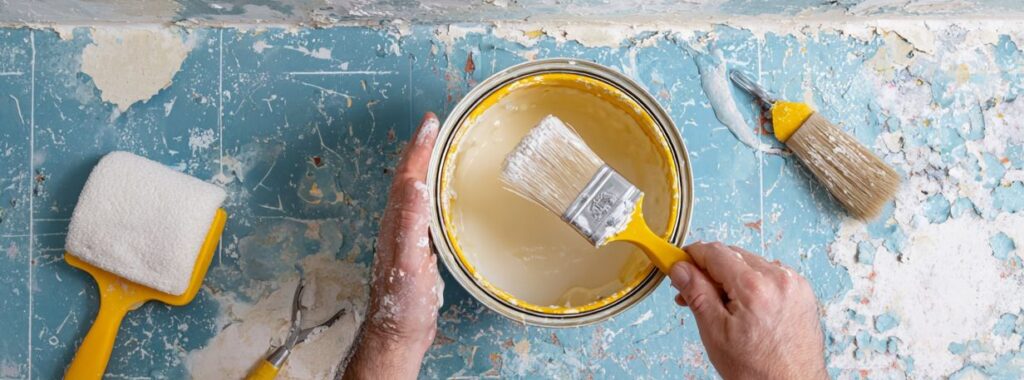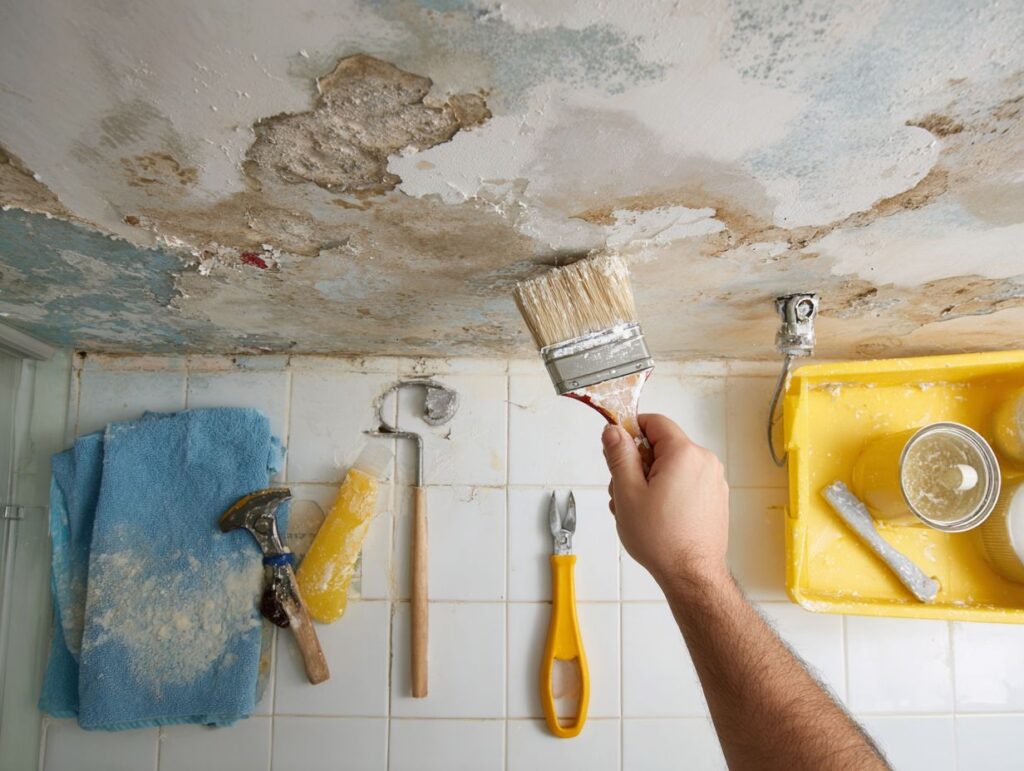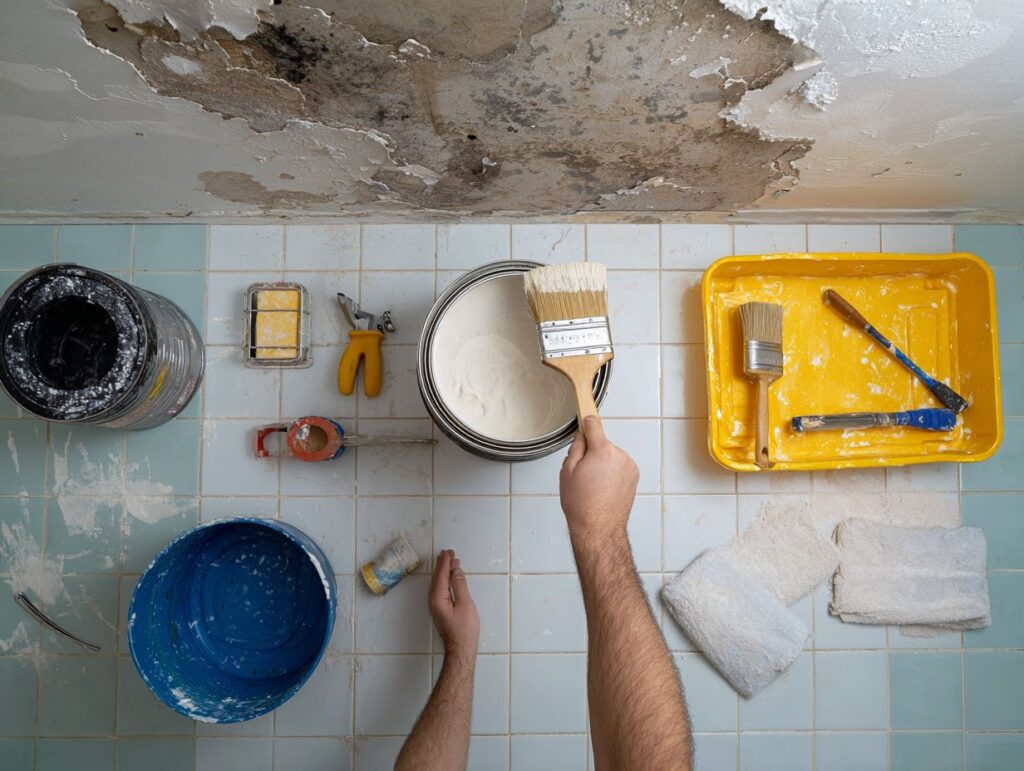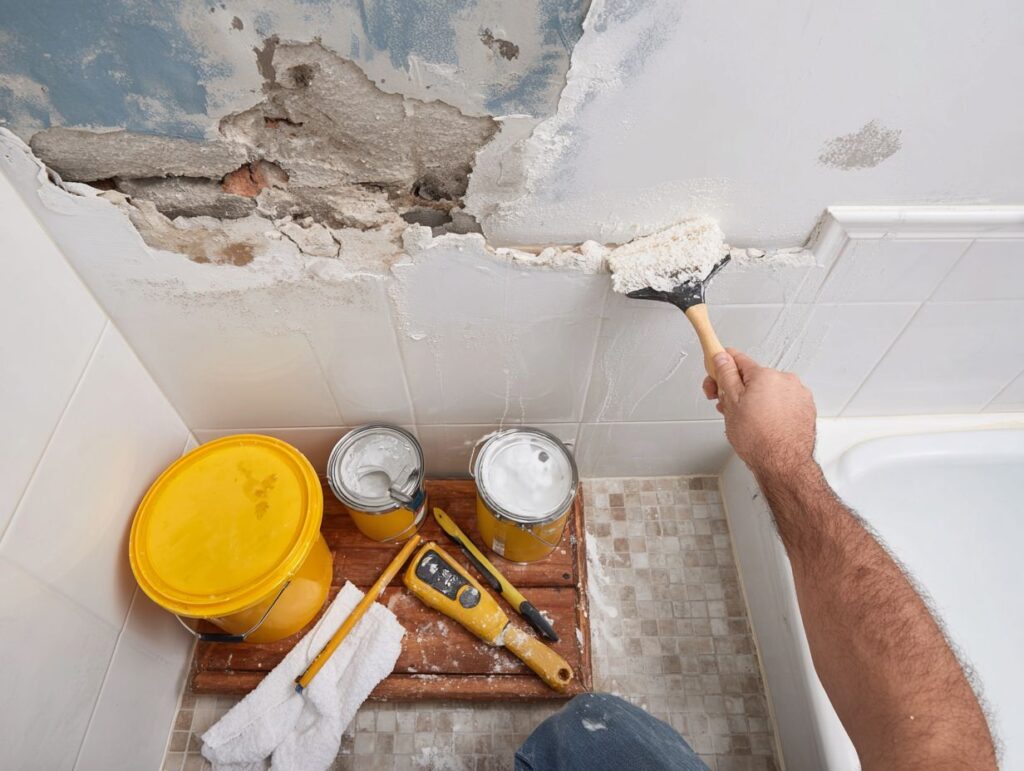
Effective Solutions for Bathroom Ceiling Water Damage Repair
Experiencing a bathroom ceiling leak can be a frustrating and stressful issue for any homeowner or renter. Understanding the complexities of water damage, from identifying its source to implementing effective repairs, is crucial for maintaining a safe and aesthetically pleasing space.
If you are a tenant and experience water damage, we will provide you with steps to take to address the issue with your landlord. If the ceiling collapsed due to water damage and you are hurt, it’s important that you contact an attorney with experience in this area.
Understanding the Issue of Bathroom Ceiling Water Damage
Bathroom ceiling water damage is a prevalent issue encountered by homeowners and renters, frequently evident through unsightly stains and potential structural concerns. It is critical to address this matter promptly to prevent further complications.
What are the signs of water damage?
Common signs of water damage include visible stains, sagging ceilings, and the presence of mold, all of which indicate that prompt action is necessary to prevent extensive repairs.
Identifying the Source of the Leak
Identifying the source of a leak is essential for implementing effective repairs, as leaks can originate from multiple sources, including plumbing problems or defective waterproofing materials.
To effectively trace the origin of a leak, one should begin by inspecting visible plumbing fixtures for any signs of leakage. Using a moisture meter is advisable to accurately identify areas with elevated moisture levels.
It’s also essential to examine the water supply shutoff for any drips, as this may indicate a problem with the valve. Using a moisture meter helps locate concealed leaks by measuring the moisture content within walls and flooring.
Once suspicious areas have been identified, it is important to trace any plumbing lines that run through those spaces to uncover more significant issues. By systematically inspecting each point, one can efficiently isolate the source of the leak, thereby saving time and potentially reducing repair costs.
Common Reasons for Damage
A comprehensive understanding of the common causes of water damage to bathroom ceilings enables homeowners and landlords to take preventive measures and address potential issues before they escalate.
What are the typical causes of bathroom ceiling water damage?

Common causes of water damage in bathroom ceilings include inadequate waterproofing, condensation issues resulting from insufficient ventilation, and aging plumbing systems that are susceptible to leaks.
- Inadequate waterproofing can permit water to infiltrate walls or floors. To mitigate this risk, it is advisable to conduct regular inspections of the seals surrounding showers and bathtubs and to consider using high-quality, water-resistant membranes during renovations.
- Condensation can be effectively managed by installing exhaust fans to enhance ventilation, preferably venting to the exterior, and operating them during and after shower use.
- Additionally, aging plumbing can result in unforeseen leaks; therefore, regular inspections of pipes for signs of corrosion or deterioration, along with prompt repairs, can help prevent substantial damage. Using tools like moisture meters can also facilitate the early detection of hidden dampness.
Roof Leaks and Their Impact
Roof leaks can significantly impact bathroom ceilings, as water may infiltrate the structure and cause extensive damage if not addressed in a timely manner.
How do roof leaks contribute to bathroom ceiling issues?
Roof leaks can allow water to infiltrate ceilings, resulting in stains, mold growth, and, in severe cases, structural damage that requires costly repairs. During inspections, homeowners and landlords should remain vigilant for specific indicators of water damage.
It is essential to look for water stains on the ceiling, which typically appear as brown or yellow patches, indicating prolonged exposure to moisture.
Peeling paint or wallpaper may also signify water intrusion, as excessive moisture causes the paint to separate from the surface. Additionally, checking for mold growth is critical; it can present as dark spots or fuzzy patches.
If any of these signs are observed, it is essential to address the issue promptly to prevent further damage and maintain the integrity of the home or apartment.
Assessing the Damage
Evaluating the extent of water damage is crucial for determining the appropriate repair strategy and minimizing potential long-term issues.
What steps should you take to evaluate the extent of the damage?
To assess the extent of the damage, homeowners and landlords should conduct a systematic evaluation that includes checking for visible signs, utilizing a moisture meter, and examining the presence of mold in the affected areas.
Begin the assessment by performing a visual inspection of ceilings and walls for any discoloration or bulging, as these can be indicative of moisture damage. Subsequently, use a moisture meter to measure humidity levels in suspected locations, with a particular focus on areas near pipes and potential leak points.
If moist areas are identified, it is essential to inspect for mold or mildew, which are common concerns in damp environments.
Additionally, evaluate the structural integrity of the ceiling by gently tapping to listen for hollow sounds, which may indicate weakness. Promptly addressing these issues is crucial in preventing further deterioration.
Dealing with a Bathroom Ceiling Leak

Addressing a bathroom ceiling leak promptly is crucial for mitigating further damage and minimizing repair costs; therefore, immediate action is essential.
What immediate actions can you take to mitigate damage?
Immediate actions to undertake include shutting off the water supply, absorbing excess water, and utilizing a dehumidifier to lower humidity levels in the bathroom.
After implementing these measures, it is essential to thoroughly dry the area to prevent mold growth. Towels should be used to wipe down surfaces, and the dehumidifier should be positioned centrally in the room to maximize air circulation. Additionally, placing fans near the windows can further enhance airflow.
It is also important to inspect for any damaged materials that may require replacement to fully mitigate the risk of future leaks.
Fixing Water Damage
Addressing water-damaged ceilings requires a systematic approach to ensure effective repairs and to prevent the growth of mold.
What are effective repair methods for water-damaged ceilings?
Effective methods for repairing water-damaged ceilings involve removing the affected drywall, treating for mold mitigation, and installing moisture-resistant materials.
- Begin by cutting out the damaged drywall in a square shape, ensuring that you remove at least one inch beyond the visible damage.
- Next, treat the surrounding area with a specialized mold removal solution, such as Concrobium Mold Control, to prevent future mold growth.
- For the replacement, utilize moisture-resistant drywall, such as Green Board, which offers enhanced durability in humid environments.
- Conclude the repair process by painting the ceiling with a mold-resistant paint, such as Benjamin Moore’s Aura, to establish a barrier against moisture intrusion.
Seeking Professional Help
In cases of extensive water damage, it is advisable to seek professional assistance to ensure that repairs are conducted safely and thoroughly.
When should you consider hiring a professional for repairs?

Hiring a professional is advisable when the damage is extensive, when mold is present, or when there are suspected structural issues that may be compromised. For instance, visible mold growth covering large areas is a strong indication that professional intervention is required.
Additionally, if water damage affects structural supports, such as beams or joists, this can pose significant safety risks. In cases involving complex plumbing repairs, such as pipe replacements or sewage problems that exceed basic DIY capabilities, it is prudent to consult an expert.
Engaging professionals ensures that these serious situations are managed with the necessary expertise and in compliance with safety regulations.
Tenants: Document the Damage, Contact an Experienced NYC Attorney
If you rent your apartment or home, contact your landlord immediately. Be sure to document the building’s condition, including pictures of the ceiling. Make sure all communication with your landlord is in writing.
If the bathroom leak caused the ceiling to collapse and you are injured, seek medical attention immediately, inform your landlord, and contact an attorney immediately. Examples of injuries include head and brain injuries; broken bones and fractures; severe cuts and bruises; paralysis and nerve damage; damages to discs, muscles and tissues in the spine; and damage to joints and their tendons, ligaments, nerves and cartilage, especially vulnerable joints like knees, shoulders, wrists, feet, ankles and elbows.
The Law Offices of Nicholas E. Tzaneteas in New York City has experience working on and winning cases for their clients who have had collapsed ceilings. In addition to obtaining lost wages, pain and suffering, and medical bills for your injuries, you can get compensation to cover alternative housing costs while your home is being repaired by professional people.

